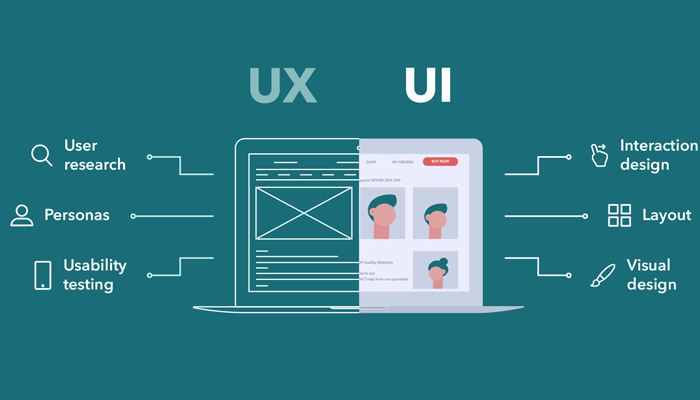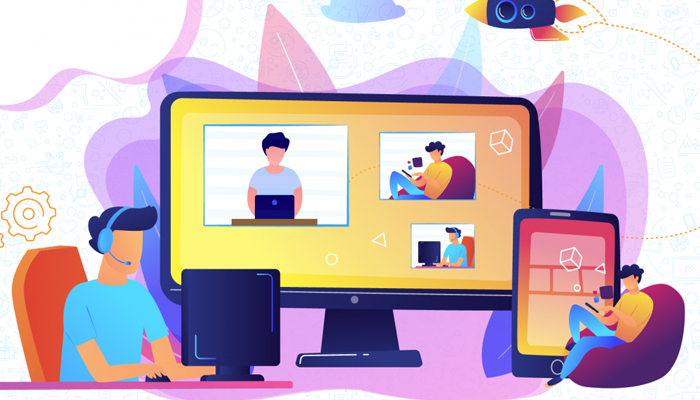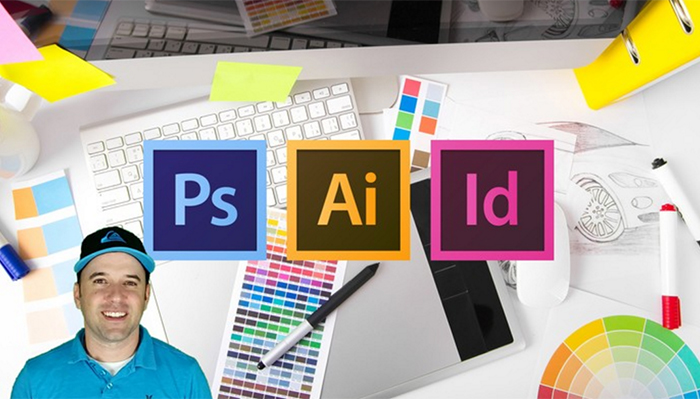Best Selling Products
Self-Study Online UI/UX Design for New Students Extremely Simple and Easy to Understand
Nội dung
- 1. The Importance of UI/UX Design
- 1.1 Understand the concepts of UI and UX
- 1.2 Principles in UI and UX design
- 2. UI/UX Design Learning Path for Beginners
- 2.1. Understanding the Basic Principles of Design
- 2.2. Get Familiar With Design Tools
- 3. Effective Self-Study Design Method
- 3.1. Take Advantage of Online Documents
- 3.2. Build a Specific Roadmap
- 3.3. Find a Guide or Companion
- 3.4. Practice Is The Key
- 3.5 Maintain Motivation and Personal Development
- Conclude
Learning UI/UX design for new students has never been so simple. Sadesign shares details below the article for your reference.

UI/UX design (User Interface and Experience) is one of the hottest fields today. It opens up many potential career opportunities. However, for new students, self-studying UI/UX design at home can become a challenging journey without the right method. This article will provide you with a roadmap and important tips for effective self-study.
1. The Importance of UI/UX Design
Nowadays, UI/UX design is not only limited to technology products but also extends to many fields such as e-commerce, marketing, and communication. Design skills not only help you improve your career opportunities. At the same time, it also develops creative thinking and problem-solving skills.

1.1 Understand the concepts of UI and UX
UI (User Interface) in design is the concept of user interface, where users directly interact with the product or system. This is an important element in digital product design. Including components such as: Layout, color, images, typography and navigation elements.
The main goal of UI is to create an interface that is intuitive, friendly and easy to use. It helps users perform tasks efficiently and comfortably. A good UI design not only ensures aesthetics but also synchronizes with the user experience (UX). Thereby increasing user satisfaction and engagement with the product.
The concept of UX (User Experience) in design is the overall experience of a user when interacting with a product, service or system. It includes all factors related to user perception, convenience, efficiency and satisfaction.
In design, UX is not only about beautiful interfaces but also focuses on optimizing functions. To ensure ease of use and bring real value to users. A good UX design requires careful research on user behavior, needs and expectations. From there, appropriate design solutions are built to create a smooth and positive experience.
Learning UI/UX design is an opportunity for you to:
- Grasp the tools and skills needed to create user-friendly products.
- Increase competitiveness in a competitive labor market.
- Freedom to create and express your personal mark through real-life projects.
1.2 Principles in UI and UX design

Principles of user interface (UI) design play an important role in creating an effective and intuitive user experience. A good UI design should ensure consistency, ease of use and user-friendliness. Elements such as color, layout, typography and interaction should be carefully considered to create harmony and aesthetics.
Putting the user at the center of the design process ensures that the product not only meets the needs but also creates a sense of comfort and trust when used. Applying these principles not only enhances the value of the product but also contributes to building a strong and sustainable brand.
UX design principles are a set of rules and methods for optimizing the user experience when interacting with a product or service. These principles emphasize putting the user at the center, ensuring that every design element is geared toward meeting their needs, desires, and behaviors.
Some of the key principles include: Simplicity, Intuition, Consistency, and Accessibility. At the same time, implementing these principles requires deep user research, continuous testing, and improvements based on real-world feedback. This not only increases user satisfaction, but also contributes to brand equity and business performance.
2. UI/UX Design Learning Path for Beginners

Following the UI/UX design learning roadmap below will help newbies easily grasp:
2.1. Understanding the Basic Principles of Design
Design is a creative field that requires a combination of art and science. The goal is to create products, spaces or experiences that have value and meaning. To achieve high efficiency in design, it is extremely important to understand and adhere to the basic principles. These principles include: Balance, Proportion, Rhythm, Emphasis and Harmony.
Balance helps create stability in a composition, while proportion ensures elements are arranged logically and aesthetically. Rhythm provides smooth connection and movement between elements. It also helps draw attention to important areas.
Ultimately, harmony ensures that all elements work together in a unified manner and are consistent with the design goals. Understanding and effectively applying these principles will help designers create products that are not only visually appealing but also meet the needs of the user.
Before diving into the technical tools and skills, you need to master the basics:
- Color: Learn about color combinations, contrasts, and the psychological meanings of each color.
- Layout: Apply the principles of balance, symmetry and emphasis in your design.
- Typography: Know how to use typography to increase appeal and clarity in your products.
- Design principles: Focus on simplicity, convenience and user-friendliness.
2.2. Get Familiar With Design Tools

Becoming familiar with design tools is an important step to improving the productivity and quality of your creative work. Mastering these tools will not only save you time, but will also open up many opportunities to express your ideas more professionally and effectively.
To get started, you should learn the basic features, refer to the documentation and practice regularly. At the same time, updating new trends in the industry is also an important factor to optimize the usability of the tool. Thereby enhancing the value of your design products. Some popular tools are as follows:
- Adobe XD and Figma: Two powerful tools dedicated to UI/UX.
- Canva: Suitable for beginners, easy to create products quickly.
- Sketch: A professional application loved by many designers.
3. Effective Self-Study Design Method
Some methods when you learn design by yourself are specifically as follows:
3.1. Take Advantage of Online Documents
Effective self-study design methods require learners to make the most of online materials to develop skills systematically and deeply. Currently, there are many online educational platforms that offer courses from basic to advanced. It includes video tutorials, practice exercises and reference resources.

Learners should clearly define their learning goals, choose reputable sources of materials. At the same time, create a learning path that is suitable for their own abilities. In addition, participating in online design communities is also an effective way to exchange experiences. From there, receive feedback and update the latest trends in the industry.
Persistence, self-discipline and the ability to apply knowledge into practice will be key factors to help you achieve success in the process of self-studying design.
3.2. Build a Specific Roadmap
An effective self-study design method requires a clear roadmap and serious commitment from the learner. First, it is necessary to identify specific goals, such as mastering a design tool or mastering aesthetic principles. Next, build a detailed study plan, including allocating reasonable time for each content to be learned.
Finding reliable resources such as specialized books, online courses or reputable forums is also an important factor. Besides, regular practice and participation in real projects will help consolidate knowledge and improve skills. Finally, constantly evaluate and adjust the roadmap to ensure continuous progress and achieve the desired results.
3.3. Find a Guide or Companion
Having a mentor or a learning partner will help you get important guidance, avoid getting lost, and stay motivated. Effective self-study of design requires not only perseverance and personal effort, but also support from quality resources.

One smart approach is to find a mentor or companion who has experience and expertise in the field of design. Sadesign.vn is a reliable address. This is where you will find articles, tutorials and opportunities to connect with the professional design community.
Learning from those who have gone before you not only saves you time but also opens up new perspectives. This contributes to improving your design skills and thinking in a comprehensive way.
3.4. Practice Is The Key
Once you have mastered the basics, you need to put them into practice. Here are some effective ways to practice:
- Take on personal projects like app or website design.
- Participate in design competitions to hone your skills.
- Sign up to be a freelancer to study and earn extra income.
3.5 Maintain Motivation and Personal Development
Self-study can be difficult, but perseverance and a progressive spirit will help you overcome it. Don't forget:
- Always update new design trends.
- Evaluate and improve your product after each project.
- Share and get feedback from the community to perfect your skills.

Conclude
Self-studying UI/UX design at home is not only an opportunity for you to develop yourself but also a way to affirm your personal mark in a creative field. Start with small steps, study persistently and practice constantly, you will definitely achieve success in this journey. Don't forget to share with Sadesign your journey to success.












































